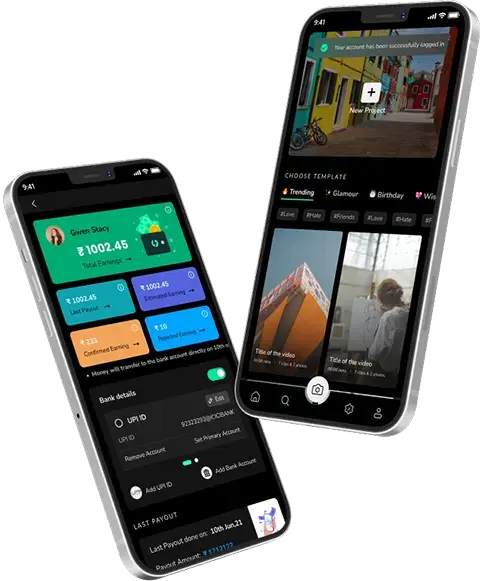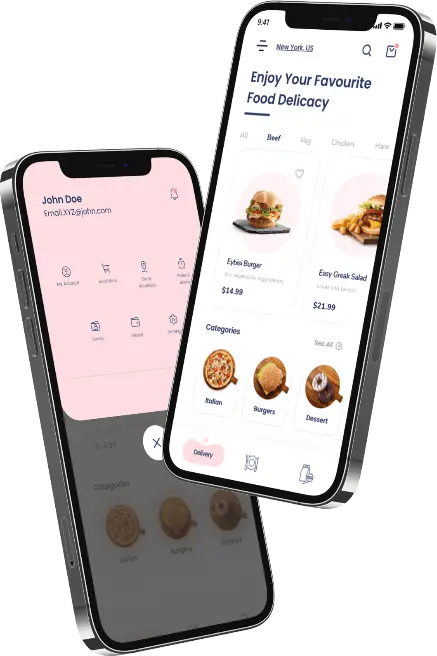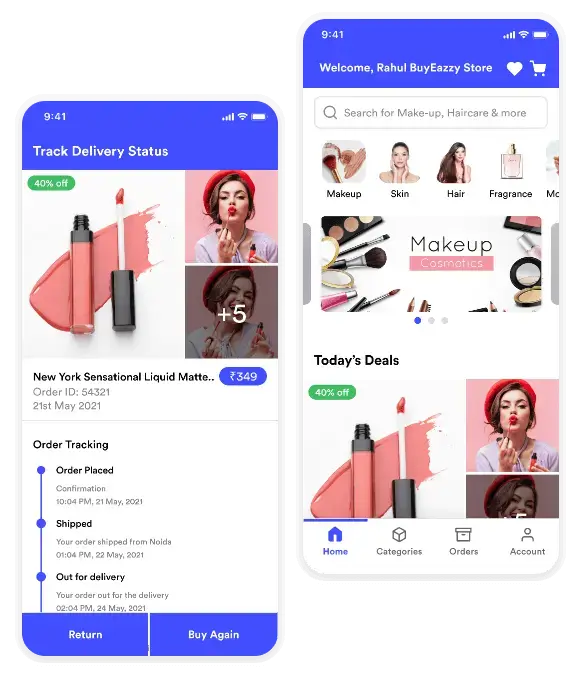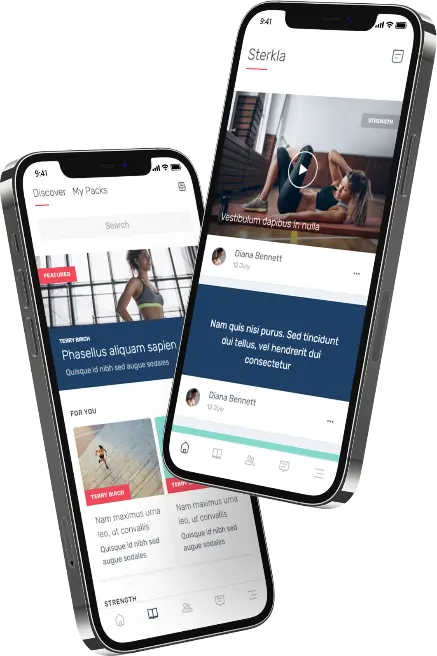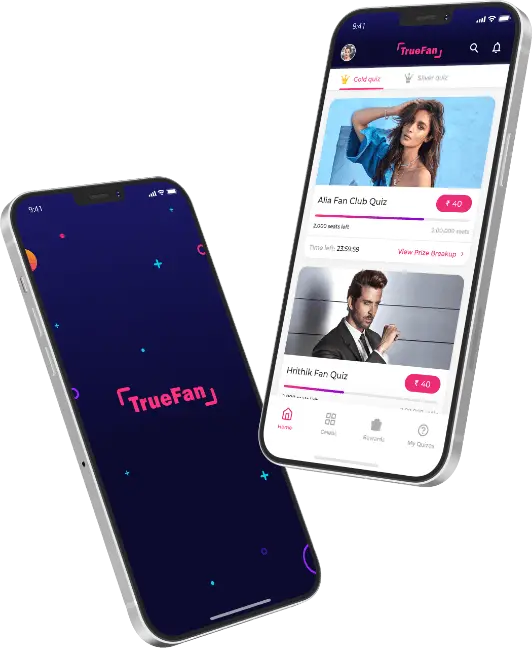7 Aug 2024
Updated on March 4th, 2025
Bridging Cultures: The Rise Of Translation Apps In A Globalized World
Shaun Bell

The rapidly changing technological realm has interconnected the world with each other, breaking the barrier of language through several apps that leave people in wonderment. The growing language translation app demand among people has provided app development companies with the brilliant opportunity to create and invest in the hot market. An Android app development company can generate specific application solutions for your enterprise.
At the same time, there’s still a chance for them to offer users unique overall experiences by providing them with tailored experiences and a user-friendly interface. With the global interactions between countries and people of different countries increasing rapidly, demand for productive translation tools has arisen to break the language barriers between individuals.
From the casual traveller walking down unfamiliar streets to the company expanding into new markets, translation technologies are taking an increasingly prominent role in our lives. Advanced technologies at the core of translation apps, including Artificial Intelligence and Machine Learning, provide real-time accurate translations. A reliable mobile app development company can assist you in navigating the growing market.
This capability covers context, idioms, and culture-specific nuances, which give meaning to the message and a tone to the delivery. In this respect, it becomes an invaluable tool for professional and academic scenarios.
Not to mention the convenience offered by translation apps: the instant availability, through decades-old translation technology, from a single smartphone, really makes these apps invaluable for translating a menu into a café in Paris, finding out the directions to some place in Tokyo, or even just negotiating with a client in São Paulo.
Their integration is brilliant, running smoothly on several devices, from smartphones to smartwatches, making it a highly potent tool in contemporary and mobile life. Imagine being in Italy and not needing to learn their language to communicate with locals at the most basic level because you whip out that dinky mobile device and use an app that does translations to say what you want. A voice translation app development company can help you realize your vision and build an app accordingly.
Essentially, they are not gadgets but connectivity enablers across the globe. They realize understanding, foster international collaboration, and enhance our cultural experience. The more sophisticated technology becomes, the more translation apps realize their potential to bridge linguistic divides and bring the world closer together.
Growth Of Voice Translation Apps
In the past two years, translation apps have astonishingly grown in Australia, greatly influenced by increased globalization, immigration, and technological advancement.
Data analysts speculate that the nation’s language translation software market grew by a 9.2% compound annual growth rate (CAGR) between 2021 and 2026.
The spurt is attributed to the rapid increase in the population of non-English-speaking individuals and the excellent tourism culture that broke records every year before the pandemic, surging to as high as 9 million visitors.
Further, a study by IBISWorld showed that in 2022, the translation and interpreting service industry in Australia was pulling annual revenue of $1.1 billion, thus showing that the necessity for language services in different settings or sectors, including healthcare, legal, and also education, had been on an upward spiral. Increased demand highlights the need for Android app development that can provide flexible, accessible solutions to cater to the needs of multiple users within these sectors. Increased demand highlights the need for Android app development that can provide flexible, accessible solutions to cater to the needs of multiple users within these sectors.
Growth After The Pandemic
The COVID-19 pandemic has fast-tracked the increase in adoption rates of translation apps across Australia. With border closures and a complete shutdown of international travel, Australians turned to digital communication tools to hold on to relationships with others across languages.
The demand for translation apps soared as businesses adapted to remote operations and sought to engage global markets online.
According to the Australian Digital Transformation Agency, the boost that translation apps experienced between 2020 and 2023 was remarkable. The combined downloads for the three top translation apps, Google Translate, Microsoft Translator, and iTranslate, have risen by more than 35% during this time.
It is estimated that revenues from subscription and in-app purchases associated with translation apps have also grown by about 40%, making it a telling pointer toward dependence on the tools.
According to the Australian Council for Educational Research, 30 per cent more students and teachers in multilingual classes have started using translation apps.

What Is A Voice Translation App?
Voice translation apps are innovative solutions that offer spoken language translation in real time to bridge the communication gap between different languages. Modern speech recognition, natural language processing, and machine learning technologies make the application possible by instantly translating spoken words between languages. A voice translation app development company can help you understand the history of translation apps in detail in no time.
The process initiates with speech recognition, where spoken input is picked up by the device microphone and accurately transcribed into text. Further processing of this text is done through NLP to understand context, syntax, and semantics so that the translation retains the proper meaning and tone of expression. Again, this translated text gets converted into the speech form of the target language, facilitating flawless verbal communication. Android app development is crucial in merging these advanced technologies into a mobile platform in a seamless manner, providing smooth performance and user experience.
Why Does One Need Voice Translation Apps?
Voice Translation apps are an invaluable tool for individuals looking to overlook language barriers and have seamless communication in foreign lands to avoid getting caught in any scandal. They give real-time translations that aid communication easily and foster understanding across cultures, bridging language gaps to help interaction in multilingual environments.
1. Globalization And International Travel
The forced lockdowns are no longer in place, and people have started travelling globally, only to face language barriers across the borders. As globalization shapes the world, people travelling for business, work, tourism, and other reasons find themselves in countries where they may not be well-versed in the local language. In all these situations, voice translation applications come in handy to communicate properly in the ideal setting of experiences of everyday situations.
Voice Translation apps let you speak with locals who can guide you around unknown places and facilitate access to the necessary services in foreign lands without hassles. A mobile app development company can help you create a well-researched app that is a hit globally with its unique features and functions.
2. Cross-Cultural Communication
In today’s multicultural society and workplace, communication across linguistic and cultural boundaries is pivotal for collaborative working teams to understand one another.
A voice translation app helps individuals communicate ideas and foster relationships across cultures and languages.
These applications translate in real-time, thus facilitating smooth communications for people even when they speak different languages. Whether in a boardroom meeting, social encounter, or an education environment, the voice translation application pushes toward better communications, enhanced productivity, and an enabling environment. They can connect at deeper levels, thus bridging the gaps and enabling harmony in globalized and multilingual communities.
3. Education And Learning
A voice-to-voice translation application would always benefit every language learner at any level: basic, intermediate, or advanced. They provide translation assistance in real-time and through the speech function, thus enhancing learning through language immersion. It is facilitated by language acquisition in realistic contexts, where they can rehearse and comprehend new languages in life situations. The interactive approach makes learning more engaging and compelling, thus building confidence and proficiency to negotiate one’s life.
4. Emergency Situation
Imagine you are on a trek on hills in a foreign country with friends. While at the peaks, you fall and get injured. Now, how are you going to manage if your local language is not good enough? How are you asking for help?
In these situations, a voice translation app acts as a boon by allowing you to speak your language and then translate it into the local language. A voice translation app translates what the user says into another language so vital information gets passed to the first responder, doctor, or official involved if a person cannot speak the local language, thus saving their life.
5. Accessibility and Inclusivity
At the root of accessibility lies the principle that everyone should have equal access to information, and services, irrespective of their disability or ability.
A voice translation app integrated with speech-to-text technology is like a boon to specially-abled people suffering from hearing impairments or speech delays by helping them communicate with others and participate in conversations confidently.
These applications enable one to ‘see’ spoken words in written form and vice versa, thus bridging the gap between the communicating parties into complete equality in all opportunities.
6. Business And E-commerce
Businesses in the global marketplace deal predominantly with customers, partners, and stakeholders who often hail from different linguistic backgrounds.
A voice translation app assumes importance in seamless cross-border transactions, negotiations, and communications. An Android app development company can help you create economical approaches to help you build your dream app.
They help companies reach audiences, nurture relationships worth value across different cultures, and seek new opportunities in foreign markets. This breaker of the language barrier thus enhances one’s business beyond borders and helps to establish a strong presence globally.
7. Cultural Exchange And Diplomacy
Voice translation applications function as one of the very critical parameters of cultural exchange, diplomacy, and mutual understanding among nations. It functions by removing barriers to language and paving the way for a smooth interaction between communicating parties, who may have diversified cultural and linguistic backgrounds. They ensure increased access and efficient interaction and promote cooperation and collaboration, thus improving personal and international relations. A voice translation app development company has the potential to contribute significantly toward developing and making these applications better in order to further facilitate cross-cultural communication.

Steps To Create A Voice Translation Apps
Creating a voice translation mobile app is difficult since it has to follow tight security regulations to meet a wide range of user requirements. This is especially true considering how important and complex the voice translation sector is.
However, you need to consider several things if you’re an entrepreneur looking to launch a profitable voice translation app, and a reliable app development company can help you realize your vision. A leading voice translation mobile application development company can help you understand the pivotal steps in developing a mobile app that’s an instant market hit.
1. Define Your Objectives
The first and foremost step in building up a great voice translation app is to clearly define your objectives with proper market analysis regarding the languages in demand and the target audience’s needs.
First, identify the language you would want to support with specific functions and features you would like to provide your clients. Ensure that your choices align with the target user’s needs and preferences.
It includes regional dialects and cultural nuances that may be specific to the environment in which the app might be used. It will help you make the app appropriate and effective if its features can answer such elements, making it more valuable and personal for the users.
2. Market Research And Analysis
This is the step wherein you have to study and analyse the market properly before finalizing the features and languages you want in your app.
Detailed market research will help ensure that your idea is unique and existent in the light of understanding user demand, competitors, and priorities and making decisions based on the data collected.
After deciding on the concept of your voice translation app, it wouldn’t be hard to bring it into reality with the sharpness of a mind and a fantastic mobile application development company. To research the market and develop a profitable app, you should partner with a reliable mobile app development company.
3. Choose The Right Technological Stack For Your App
Choosing the correct technological stack among the millions available in the market is the rightful part of the developing process of the voice translation app, which ensures that your app offers unique features to your users with seamless integration. A leading mobile application development company can help you choose the right technological stack for your voice translation app after understanding your needs.
Choosing the correct technology stack for the voice translation application will involve selecting the correct programming languages, frameworks, and third-party APIs that best fit the requirement. A reputable mobile app development company can help you transform your business.
Secondly, state-of-the-art technologies available in speech recognition, machine translation, NLP, and text-to-speech should be incorporated to ensure accurate and seamless translations. Test several of them to realize how every combination offers the best performance and user experience in processing speed and accuracy. The rigorous selection process brings to life a robust, powerful translation application.
4. Design User Interface And Experience
Creating a user interface that sets your voice translation software apart from the competition is another essential component of creating a fantastic app. Focus on effectively using user experiences while inputting text or voice commands, setting languages, and viewing translated content. Ensure ease of navigation through a lucid interface with clear instructions, visual feedback and error-handling mechanisms that orient users and solve problems immediately. Mobile phone application development is key in making sure that your application performs flawlessly on various devices, providing a seamless and responsive experience for users.
5. Decide and Develop Core Features of Your App
After designing and developing the user interface for your app, you will decide upon the primary features you wish to offer to the users, like language translation, speech-to-text translation, language translations, etc.
Add user customization options for context-aware translation and increased accuracy and relevance. These decisions will then lead the way toward setting the overall functionality of the application and user experience to create more value and effectiveness for your target audience.
6. Implement Security and Privacy Measures
Security and privacy are the most important things to be incorporated while developing a voice translation app. First, any data transmitted from the app to servers needs to be encrypted to make it secure against interception. Robust authentication mechanisms prevent unauthorized access.
Keep updating your app regularly to protect against security vulnerabilities and test it properly to check for any threats. Ensure that clear privacy policies are placed and obtain users’ consent to collect data to ensure adherence to privacy regulations like GDPR or CCPA. In addition, make sure you include features that allow users to control their data and permission management capabilities to enhance security and user confidence. Outsource the services of voice translation app development company to assist with such constant upgrades and security.
7. Test and Quality Assurance
Testing and deployment are very critical stages in creating voice translation apps. It helps you offer faultless and bug-free products to the users and optimize your first impression.
There is a need to highlight the fact that several tests ought to be performed before the final release of the product for consumption in the market or by the end user to avoid failing in the market.
By offering to pay users to use the product in its beta stage, the application developers work with you to identify flaws in your app. It is a crucial stage in ensuring that the app systems and components conform to the requirements of the clients and the technological specifications that are made available. A mobile phone application development company can assist you in navigating the growing market.
8. Deploy And Launch
After testing the voice translation app and being satisfied, get ready for its launch by choosing a platform that is right for your app launch among the dozens available in the market. Then, work out a marketing strategy with some exciting promotional material and ads alongside a strategic launch.
This can be done by effective awareness building, generating interest, and realizing many downloads, hence the general adoption of your voice translation app.
9. Monitor Your App’s Progress
Monitoring your app is one of the most pivotal phases of developing a voice translation app, as it will let you understand how your app is doing in the market through user feedback. Monitor user engagement, feedback, and in-app performance post-launch for improvement and optimization.
This will help you understand how the app is being used and how adjustments need to be made. It will help generate new technological benefits through continuous iterations and updates in the app, based on this feedback, to answer market trends in their best form. Hire a leading voice translation app development company to help you monitor your app’s progress and make required changes.

Key Technologies To Integrate In A Voice Translation App-
Integrated with these brilliant technologies, a voice translation application has the potential to revolutionize global interactions. In this respect, machine learning algorithms will provide users of the app with tailored language choices and predictive analytics for developing better decision-making. NLP will make user interaction much more intuitive through the intervention of choices. A mobile phone application development company in Australia can assist you with the uniqueness of your solution.
1. Speech Recognition
The first and foremost technology you need to integrate into your voice translation app is speech recognition, as it will allow your users to translate their spoken language into their local language by identifying their needs.
For accurate, multi-language speech-to-text transcription, consider Google Cloud Speech-to-Text API, Microsoft Azure Speech Service, or Apple’s Speech Recognition API. Google Cloud supports more than 120 languages; in Azure, you have real-time transcription with the ability to customize models, and in Apple’s API, deep integration with iOS and macOS is provided. Each of these offers robust and accurate transcription capabilities for different applications.
Implementation
Integrate an API or library that your app might be using for speech recognition. Set up its settings to have access to the microphone on the device to capture audio. Use this API to process this audio in real-time to turn spoken words into text. It essentially means setting up event listeners for capture, handling API requests, and rendering this resulting text in your application.
2. Language Identification
This source language can be determined by processing the text transcribed with language detection algorithms or libraries, for example, using the LangID or TextBlob class. In these tools, the language is recognized based on linguistic patterns and statistical analysis. A mobile phone application development company can generate specific application solutions for your enterprise.
Now, in the implementation part, integrate this functionality into the logic of your app. The language of the input text should then automatically be detected to translate it into any target language of your choice. It will further enhance the usability of your application by ensuring language detection and translation capabilities while being smooth.
3. Machine Translation
If you need high-quality translations in several languages simultaneously, try APIs like Google Cloud Translation API, Microsoft Translator Text API, or the DeepL Translator API. All of these variants support numerous language pairs and are reputed to be highly accurate.
Next, to implement machine translation, integrate your preferred API in your app.
Configure this to translate the input text from the detected source language to the desired target language. On the app side, ensure it sends the transcribed text to the API and handles the response to display accurate and fluent translations of what the user spoke. This integration will help realize seamless multilingual conversations within your app.
4. Text To Speech Synthesis
Select one that allows for natural-sounding speech output in multiple languages, such as Google Cloud Text-to-Speech API, Microsoft Azure Text-to-Speech, or Amazon Polly. Integrate your preferred API or library into the application and make it synthesize translation text into spoken words.
Enable the production of realistic speech by adjusting the voice’s gender, language, and accent according to user preferences. A reliable voice translation mobile application development company can turn your dream app into reality by helping you analyse the market and user needs.
5. User-Friendly Interface
A user-friendly interface through which spoken words are input, translation text viewed, and spoken translations are listened to seamlessly; the design of intuitive controls, like buttons or voice commands, for initiating translation and adjusting settings is ideal.
Build UI/UX features for your app using applicable design tools and frameworks. Ensure the interface is responsive, accessible, and attractive on different devices and screen sizes to ensure users remain loyal towards your app. A mobile phone application development company can help you design an app that reaches peak operational standards.
6. Cloud computing
Cloud computing technology allows voice translation app development to leverage scalable and robust resources for real-time processing. It is feasible to effectively handle massive data volumes and complex algorithms in processing with cloud services, offloading the tasks of speech recognition, language identification, and translation toward distant servers.
Cloud platforms are exposing APIs for speech-to-text, language identification, and translation. This makes integration easier and results in a more functional app by enabling stable and state-of-the-art language processing capabilities.
7. Multiple Language Database
A Multilanguage database for a voice translation application keeps linguistic data and translating models for different languages. The database maintains audio samples, phonetic rules, and grammar structures that help the application recognize spoken words and transcribe them into text correctly.
It supports algorithms related to language detection and translation, thus making the conversion from the source into the target language fluent. With this application, complete data on each language is maintained to ensure excellent context-based translations.
It keeps updating regularly and uses machine learning to refine the database, so it is becoming more accurate at adapting to new linguistic trends and raising overall accuracy and efficiency for multilingual voice translation tasks.

Key Features To Offer In Voice Translation Apps
This rapid growth in the development of voice translation technologies opens up a brilliant avenue for adding unique value to AI-powered voice translation applications that drive up user experience and operational efficiency. Understand how AI transformations can help you design an app to meet current needs and anticipate future needs in the voice translation landscape. A known mobile app development company can help you incorporate all essential features in your voice translation apps
with no issue.
1. Login/ Sign-Up
The first pivotal feature of all voice translation apps is the registration or login process, followed by detailed user information linked to the user’s preference and details for the many language tools.
This way, the users can log in to the benefits of the app and keep some personal data on themselves, namely, names, telephone numbers, physical addresses, and preferred products. Such information can give target customers a personalized experience on the platform.
2. Real-Time Voice Translation
A voice translation app development will help develop translation apps that assists one in communicating easily across many languages. The real-time voice translation feature picks up the words spoken through the microphone, processes the audio to transcribe and translate it instantly, and then returns the translated text or speech. This system is supported by advanced speech recognition, language detection, and machine translation technologies to give immediate and accurate translations.
It provides smooth and efficient communication between the two interlocutors in any situation, from travelling to business meetings through live conversation between speakers of different languages, thus improving the user’s experience with minimal delays.
3. Text Translation
Another essential feature you need to integrate into your voice translation app is text translation, which will allow your users to translate their concerns into any of the chosen languages instantly. The voice translation app’s text translation feature converts spoken words into written text before translating them into another language. It picks up the audio first via the device microphone.
Then, speech recognition technology kicks in to transcribe spoken words in text form. This text gets passed to a translation engine, which changes it into a target language. This feature ensures real-time, accurate communication between different languages among people, increasing usability for applications such as travel, business, and multilingual conversations.
4. Multi-Language Support
The multiple language support feature allows the voice translation app development to interpret and translate several languages to enable users to communicate across different languages effortlessly. This functionality allows the app to recognize and transcribe spoken input in various languages and then translate it into the target language.
By combining robust speech recognition and machine translation APIs, the app can be applied potentially to any number of language pairs and return relevant contextual translations. This feature is essential for users desiring real-time conversations in a foreign language or content translation in another language, thus facilitating global communication and access.
5. Speech-To-Text
The speech-to-text feature in the voice translation app turns spoken words into written text. It is achieved by capturing and processing audio input from a user’s microphone via speech recognition technology.
This audio is then transcribed, with an accurate text version created for the spoken word in real-time. This text forms the base for translation into the desired target language. Integrated with speech-to-text functionality, the app will allow easy conversation between different languages, easier understanding, and real-time translation of spoken conversations.
6. Conversation Mode
This conversation mode in a voice translation app facilitates real-time communication in two languages. The user speaks into the application, which will transcribe and translate the speech into the desired language and play it back for the other party. The app listens for the response, translating it to the original language.
This feature is often equipped with automatic language detection, seamlessness of turn-taking, and support for multiple language pairs, thus allowing conversations to flow naturally and smoothly.
7. Camera Translation
The camera mode in a voice translation app allows users to translate text taken through the device’s camera. Pointing a camera to written content, it detects and processes the photo in real-time. It reads the text using OCR technology and then translates it into the user’s chosen language.
This feature brings flexibility to the application by giving users a robust tool for translating speech and text. It is helpful for travellers and language learners who quickly want to translate printed materials.
8. Offline Mode
An offline mode in a voice translation application will allow users to use it without an internet connection. This feature is beneficial at locations that have less or no connectivity. It’s accomplished by carefully uploading the necessary databases and language models to the device.
Then, users can speak into the application, and the audio will be processed locally to produce translations. It speeds up the process because a user doesn’t need to contact the server to perform translations, and it also makes it more private by limiting the quantity of data sent. It becomes more functional continuously through offline mode. It makes the application more reliable and versatile when travelling or in remote places.
9. Accessibility Feature
An accessibility feature in a voice translation application makes it usable for all, including the differently-abled. This would pertain to screen readers reading the text for visually challenged users and voice control that enables one to navigate and issue commands using speech itself.
Variable font sizes and high contrast modes support users who have visual impairments. The hearing impaired benefit from real-time text captions, while those with hearing difficulties are catered for with adjustable audio settings. These features will make the application all the more inclusive, making the voice translation feature quite useful for persons with different needs.
10. Feedback And Improvement
A feedback and improvement option in a voice translation app would allow users to comment and rate the accuracy and fluency of translations. This kind of user feedback is collected and analyzed to outline the common issues and areas that need refinement. With this data, machine learning algorithms would then be able to refine translation models for better performance in the future.
Since the user is involved in the improvement process, over time, the app evolves towards more accurate and reliable translations. This feature in itself enhances both the satisfaction of the user and the overall effectiveness of the app. Voice translation app development is important for integrating these functions so that the app continues to adapt to accommodate user requirements and provide more and more accurate translations with time.

How Much Does It Cost To Build A Voice Translation App In Australia?
Depending on several factors, the cost of developing a voice translation app can vary widely in Australia. Features, complexity, supported platforms, development team, and timeline would increase how much an app costs. Collaborate with a reliable mobile app development company to understand your goals and deliver them within your budget. A voice translation mobile app development company can help you transform your business ideas into a high-performing reality.
Key Cost Determinants
The cost of developing a voice translation application in Australia can vary from AUD 50,000 to AUD 200,000. It depends on several factors: the complexity of the work, features, development team expertise, and time allocated to the project.
Crucial aspects include speech recognition, language translation, user interface, and back-end services. Offline operation, support of several languages, or AI integration are other options that would increase costs by more than tenfold. Further investment will then be required with ongoing maintenance and updates.
1. Features and Complexity
Text-to-speech, multilingual translation, and speech recognition are examples of basic functionality. Advanced capabilities include multilingual support for real-time translation, offline functionality, customer interfaces for individual users, machine learning integration, and cloud synchronization.
2. Platforms
Development for either iOS or Android platforms, or both, would impact the cost. Development of the web version or the desktop version would incur additional monetary value.
3. Development Team
It depends on whether you will hire a local Australian development team or freelancers or outsource it to an overseas team. The team will primarily include developers, UI/UX designers, project managers, and Quality Assurance testers.
4. Technology Stack
It includes the cost changes based on programming languages, frameworks, and third-party services needed, which involve speech recognition APIs, translation APIs, and cloud services.
5. Design and User Experience
In cases where highly complex and user-friendly interfaces are needed, more investment will be necessary for UI/UX design.
6. Extra Costs
Host it and cloud services for hosting the app
Maintenance and updates for the app
Marketing it through different channels

Cost Estimates
Basic Voice Translation App
Features: Voice recognition, Basic Translations for a few languages, text-to-speech.
Cost: Estimates of cost somewhere between 30,000 AUD to 60,000 AUD
A voice translation mobile app development company can help you understand the factors affecting the cost of app development.
Moderate Complexity App:
Real-time translation support for multiple languages and better UI/UX offline capabilities. The estimated Costs will be around $ 60,000
The app’s features include advanced machine learning, real-time translation with a significantly high level of accuracy, support for multiple spoken languages, cloud synchronization, custom UI/UX, and solid offline capabilities.
Roughly estimated costs for such apps often range from AUD 120,000 to more than AUD 250,000.
Costs for a Moderately Complex App Project Management:
$10,000 – $20,000
- UI/UX Design: $15,000 – $30,000
- Backend Development: $20,000 – 40,000
- Frontend Development: $20,000 – 40,000
- Integration of Speech and Translation APIs: $10,000 – 20,000
- Testing and QA: $10,000 – 20,000
- Miscellaneous hosting, cloud services: $5,000 – $10,000
Tips to Reduce Costs Stick to the MVP Approach:
It’s best to build a
- Minimum Viable Product (MVP) with core essential features and gradually upscale.
- Offshore Development: Choose to develop in regions where the cost is much lower.
- Open Source Tools: Use open-source tools and libraries to reduce development costs and time.
- APIs: Use available APIs for voice and text intent instead of developing from scratch.
The above estimates are rough and easily varied by several factors, depending on specific requirements and market conditions. Naturally, it makes sense to communicate your needs to several companies that work in app development to get a detailed quote.
Conclusion
Voice translation apps have revolutionized communication in the globalizing modern world. By applying advanced technologies—artificial intelligence, machine learning, and natural language processing—to break through the linguistic barriers, these tools make perfect conversations possible across different languages.
Over time, with constant improvements, these apps are becoming more accurate, efficient, and user-friendly, thus extending their application areas in multiple industries like tourism, business, education, and health.
7 Pillars is a brilliant voice translation mobile app development company crafting innovative, user-centric applications across multiple platforms. Known for its skilful implementation of state-of-the-art technologies like AI, Augmented Reality, and blockchain, it provides robust, scalable solutions that propel business growth.
With a commitment to excellence, 7 Pillars consistently outperforms customer expectations, setting industry benchmarks in the mobile app development market.
On the travel front, voice translation applications are vital because they give real-time
translations, which provide tourists, most of whom are not conversant with a country’s native language, with reduced fear of going around such a country.
They are also applied in business during international negotiations, client meetings, and collaborations, all of which require clear and precise communication, like the key ingredient for success in a global market.
Enlist 7 Pillars’ support, a brilliant voice translation mobile app development company, and get cutting-edge, accurate, and user-friendly results to break down language barriers. Equipped with high-end AI and Natural Language Processing, it provides language barrier-free communication to increase global connectivity.
If you are looking into developing a voice translation app, then look no further and contact our team at 7 Pillars, a leading voice translation mobile app development company, to turn your ideas into a reality.



